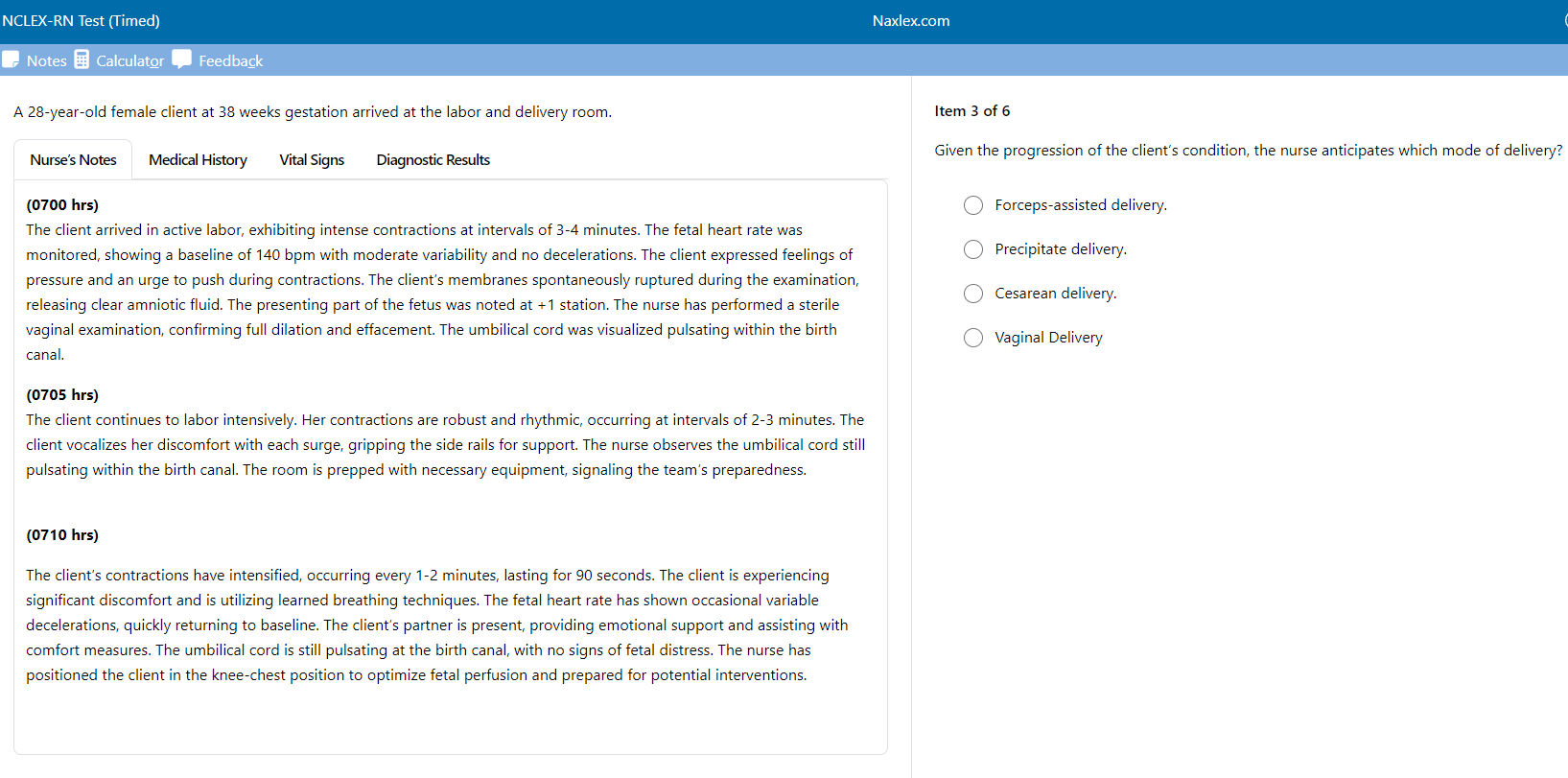Writing NCLEX-style questions is essential for evaluating nursing students’ critical thinking, clinical reasoning, and decision-making skills. When writing the items, there is some information called the “stem” of the question, which may include phrases like “Which of the following?” “What is the most appropriate?” or “What should the nurse do?” The objective of the test can give hints on how to write the NCLEX-style questions.
Writing NCLEX style questions effectively and achieving the required score demand efficient preparation. The exam is challenging, with a greater percentage of the test-takers failing in their first attempt. For students, with the proper support and materials, you can write NCLEX style questions appropriately. Naxlex offers the best materials and guidance to prepare you for NCLEX success. Sign-up to join the test prep of choice.
Naxlex NCLEX-RN is now live!
➕ 10+ Tutored CATs
➕ 5+ Readiness Exams
➕ Comprehensive reports
➕ 14-Day Free Trial until 30th November
How to write NCLEX style questions?
Writing effectively NCLEX items can help evaluate essential higher-level cognitive skills, which are required for effective nursing clinical judgments. In this way, NCLEX questions can help determine nursing students who understand the nursing coursework and have mastered the proper analytical skills through their nursing education. The following strategies can help write good NCLEX style questions.
Determine the testing objective.
Before you write NCLEX style questions, determine the testing objective. The test questions goals are typically based on nursing curriculum objectives. The goal of the items focuses on one task, competence or concepts that students have covered in the nursing training.
It’s important to remember that this goal will consider diverse levels of Bloom’s taxonomy, such as mastering concepts to synthesizing and establishing new work. NCLEX test questions are focused on the application, analysis, and assessment of novel information, which places them on the higher end of the taxonomy.
Determine which NCLEX item type to use
Determining which NCLEX item type to use is a crucial factor to write NCLEX style questions. The following are question type you need to consider.
- Cloze (drop-down) questions: In these NCLEX style questions, test-takers complete sentences or fill information in a chart by selecting a word or phrase from a dropdown list.
- Extended multiple response questions: In this question type, up to 10 alternatives are presented to the candidate, and only one, more than one, or all may be correct. Before answering this kind of question, the candidate may have to read a passage upon which the test item is based on.
- Extended drag-and-drop questions: In these type of NCLEX items, candidate uses the “drag and drop” option to complete a given sequence. For instance, the test-taker may be presented with different steps applied in treating a particular condition. To respond to the item, the candidate would then drag and drop the steps into the proper order for treatment. Other types of “drag and drop” questions could involve filtering different types of clients who may require private rooms or to “drag and drop” the correct words to complete a sentence.
- Enhanced hot spot (highlighting) questions: In these question types, the applicant is asked to highlight findings that require patient follow-up by the nurse or health care provider.
- Matrix/ grid questions: In matrix/ grid related questions, the candidate assigns a value to a group of answers. For instance, the applicant may be asked to decide whether a given action is indicated, non-essential, or contraindicated.
- Bow-tie items: To answer the bow-tie item, all targets (placeholders for response options) must be filled with a token (the response option), which are located directly below the bow-tie display in labeled columns. Tokens from the same column are interchangeable, but a token from an “actions to take” column can’t be used to fill a “parameter to monitor” target and vice versa.
- Standalone trend items: These are individual questions that require the entry-level nurse to review information collected over a period of time.
Write the stem
The question stem is the part of the question that enables the candidate to select the correct answer or perform other tasks necessary to provide an answer (such as drag-and-drop items in a “drag-and-drop” question). The stem should be written based on the test goal and should have relevant information needed to formulate a response.
Write the answer
The next step in writing good NCLEX style questions is to write a good correct answer. The ideal answer should not be ambiguous and should be easy to pick out from the list of answers with the relevant knowledge base.
Once you determine which NCLEX item type to use writing NCLEX style questions can be manageable. The style of questions on the NCLEX comprise of the following; multiple-choices, four-options, and text-based questions written at the application/analysis level of difficulty. These questions may include different content such as; charts, tables, or graphic images.
The powerful strategy to write NCLEX style questions?
Creating high-quality NCLEX-style questions requires a thorough understanding of nursing concepts and how they apply to real-life scenarios. Here’s an easy to grasp step-by-step guide to writing effective NCLEX style questions:
Start with a clinical scenario
Begin by identifying a real-life nursing scenario relevant to the exam’s content. Make sure the scenario reflects a situation that entry-level nurses might encounter.
Create a clear stem
The stem should pose a clinical decision or problem that requires the student to think critically. Avoid unnecessary details that don’t contribute to the situation.
Design plausible distractors:
Ensure that the incorrect options are logical but don’t lead to the correct answer. Distractors should test the student’s ability to differentiate between correct and incorrect nursing interventions.
Write the correct answer
The correct response should be based on sound nursing practice. It must be the best possible action the nurse should take in the given situation.
Conclusion
Writing NCLEX-style questions requires attention to detail and an understanding of both nursing theory and practice. By focusing on clear stems, plausible distractors, and unambiguous correct responses, you can create questions that challenge students and accurately assess their critical thinking abilities.
By aligning with client needs and using Bloom’s Taxonomy, your questions will effectively prepare future nurses for the realities of patient care. For candidates requiring effective test prep guide, Naxlex is the best choice guaranteeing an A or 100% money back.


